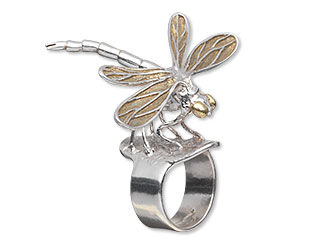Ring with Silver and 22Kt Gold Art Clay®
Let your creativity take flight! Debbie Edmonds' Dragonfly Ring turns Art Clay® silver and gold paste into a beautifully crafted dragonfly.


